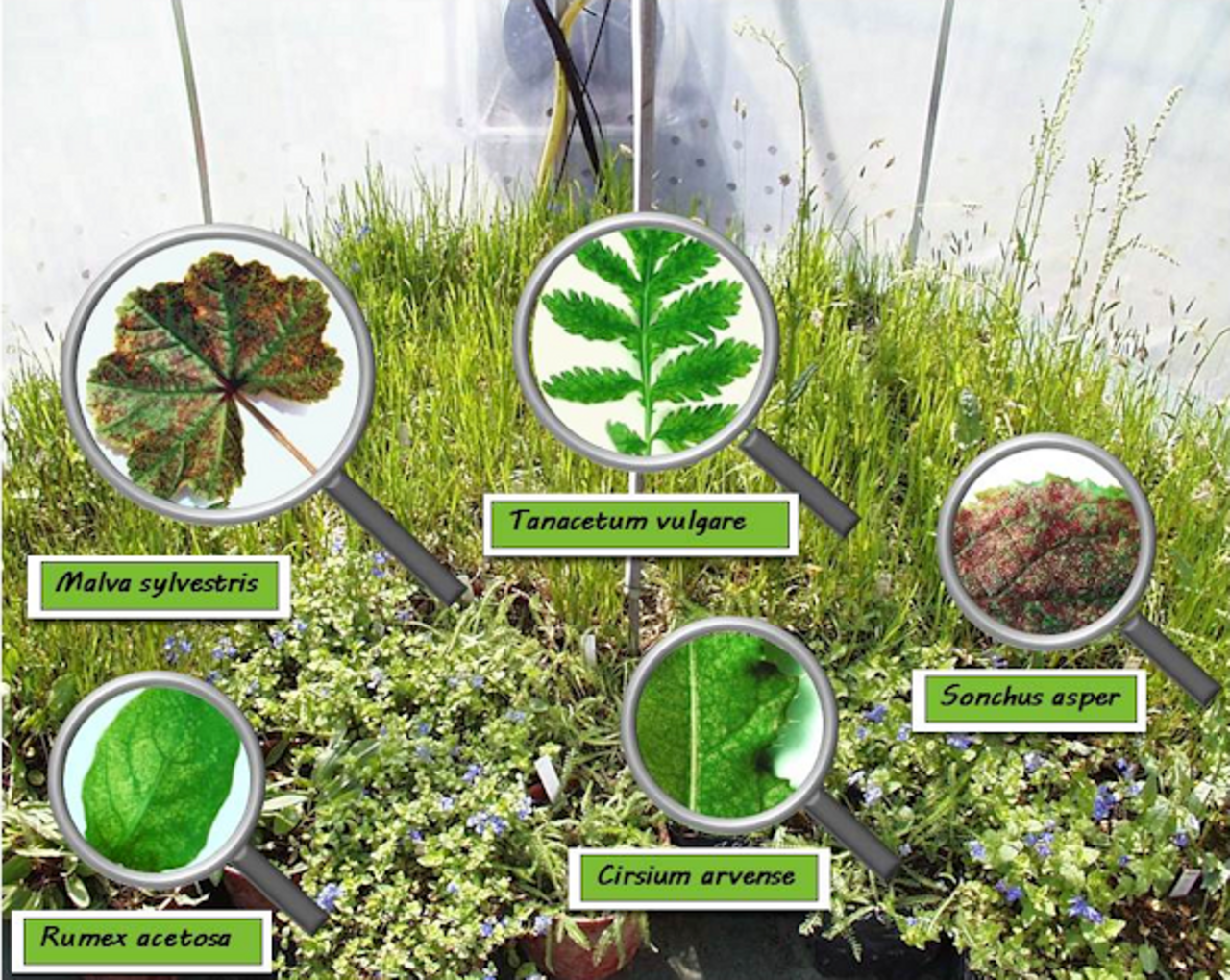Project
Impact of ozone on biodiversity

Assessment of the impact of ozone on biodiversity in terrestrial ecosystems
Tropospheric ozone is considered as the most significant phytotoxic pollutant in the atmosphere. The project will provide a synthesis of current knowledge on the effects of ozone on biodiversity and ecosystem services. Modelling and mapping approaches are used to analyze the risk of current ozone exposure levels for the vegetation in Germany.
Background and Objective
The project aims (1) to review and analyze the available literature on the impact of ozone on biodiversity in terrestrial ecosystems and (2) to assess current uncertainties in concentration-based and flux-based approaches in ozone risk assessments by use of modelling and mapping approaches.
Approach
The project is split into 4 major work packages:
Results
The review summarizes information on the ozone sensitivity of 343 cultivars of crop species, of 298 herbaceous wild plant species, and of 164 woody species. More than 50% of the investigated species must be regarded as ozone sensitive, including many native species. There is evidence that ozone change flowering, seed production and plant community composition which indirectly lead to changes in soil processes and water cycling thus affecting ecosystem structure and function
Involved external Thünen-Partners
-
Justus-Liebig-Universität Gießen
(Gießen, Deutschland) -
Technische Universität München
(München, Freising-Weihenstephan, Deutschland) - TNO
(Delft, Niederlande) -
Freie Universität Berlin
(Berlin, Deutschland)
Funding Body
-
Umweltbundesamt (UBA)
(national, öffentlich)
Duration
1.2012 - 12.2014
More Information
Project status:
finished
Publications
- 0
Bender J, Bergmann E, Weigel H-J, Grünhage L, Schröder M, Builtjes PJH, Schaap M, Kranenburg R, Wichink Kruit RJ, Stern R, Baumgarten M, Matyssek R (2015) Anwendung und Überprüfung neuer Methoden zur flächenhaften Bewertung der Auswirkung von bodennahem Ozon auf die Biodiversität terrestrischer Ökosysteme : Teil 1. Dessau: UBA, 283 p, Texte UBA 70
- 1
Bergmann E, Bender J, Weigel H-J (2015) Assessment of the impacts of ozone on biodiversity in terrestrial ecosystems: Literature review and analysis of methods and uncertainties in current risk assessment approaches : Part II: literature review of the current state of knowledge on the impact of ozone on biodiversity in terrestrial ecosystems. Dessau: Umweltbundesamt, 137 p, Texte UBA 71
- 2
Weigel H-J, Bergmann E, Bender J (2015) Plant-mediated ecosystem effects of tropospheric ozone. Progress in botany 76:395-438, DOI:10.1007/978-3-319-08807-5_15
- 3
Mills G, Wagg S, Harmens H, Bender J, Bergmann E (2013) Effects of ozone on ecological processes and supporting ecosystem services. In: Mills G, Wagg S, Harmens H (eds) Ozone pollution : impacts on ecosystem services and biodiversity ; Report prepared by the ICP Vegetation ; April 2013. Bangor: Centre for Ecology and Hydrology, pp 17-24
- 4
Mills G, Bender J, Bergmann E, Gonzalez-Fernandez I, Gerosa G, Bermejo V, Marzuoli R, Calvete-Sogo H, Finco A, Garcia-Gomez H, Alonso R (2013) Impacts of ozone on biodiversity. In: Mills G, Wagg S, Harmens H (eds) Ozone pollution : impacts on ecosystem services and biodiversity ; Report prepared by the ICP Vegetation ; April 2013. Bangor: Centre for Ecology and Hydrology, pp 31-42
- 5
Mills G, Wagg S, Harmens H, Jones L, Simpson D, Büker P, Emberson L, Power SA,, Sitch S, Bergmann E, Bender J (2013) Impacts of ozone on regulating services. In: Mills G, Wagg S, Harmens H (eds) Ozone pollution : impacts on ecosystem services and biodiversity ; Report prepared by the ICP Vegetation ; April 2013. Bangor: Centre for Ecology and Hydrology, pp 43-52
- 6
Grünhage L, Pleijel H, Mills G, Bender J, Danielsson H, Lehmann Y, Castell JF, Betheno O (2012) Updated stomatal flux and flux-effect models for wheat for quantifying effects of ozone on grain yield, grain mass and protein yield. Environ Pollut 165:147-157, DOI:10.1016/j.envpol.2012.02.026
- 7
Grünhage L, Bender J, Jäger H-J, Matyssek R, Weigel H-J (2011) Beurteilungswerte für Ozon zum Schutz der Vegetation. Gefahrstoffe Reinhaltung Luft 71(3):79-89
- 8
Weigel H-J, Dauber J, Bender J (2011) Bodennahes Ozon - eine Gefahr für die biologische Vielfalt. Gefahrstoffe Reinhaltung Luft 71(3):98-102
- 9
Schrader S, Bender J, Weigel H-J (2009) Ozone exposure of field-grown winter wheat affects soil mesofauna in the rhizosphere. Environ Pollut 157(12):3357-3362, DOI:10.1016/j.envpol.2009.06.031
- 10
Bender J, Muntifering RB, Lin JC, Weigel H-J (2006) Growth and nutritive quality of Poa pratensis as influenced by ozone and competition. Environ Pollut 142(1):109-115, DOI:10.1016/j.envpol.2005.09.012
- 11
Bender J, Bergmann E, Weigel H-J (2006) Responses of biomass production and reproductive development to ozone exposure differ between European wild plant species. Water Air Soil Pollut 176(1-4):253-267

![[Translate to English:] [Translate to English:]](/media/_processed_/4/0/csm_Titel_Ant_Plot_1c3363e3f7.png)
![[Translate to English:] [Translate to English:]](/media/_processed_/b/3/csm_Titel_93px_Ant_Plot_0ef6a20d79.png)
![[Translate to English:] Logo des Bundesministerium für Ernährung und Landwirtschaft](/media/allgemein/logos/BMEL_Logo.svg)